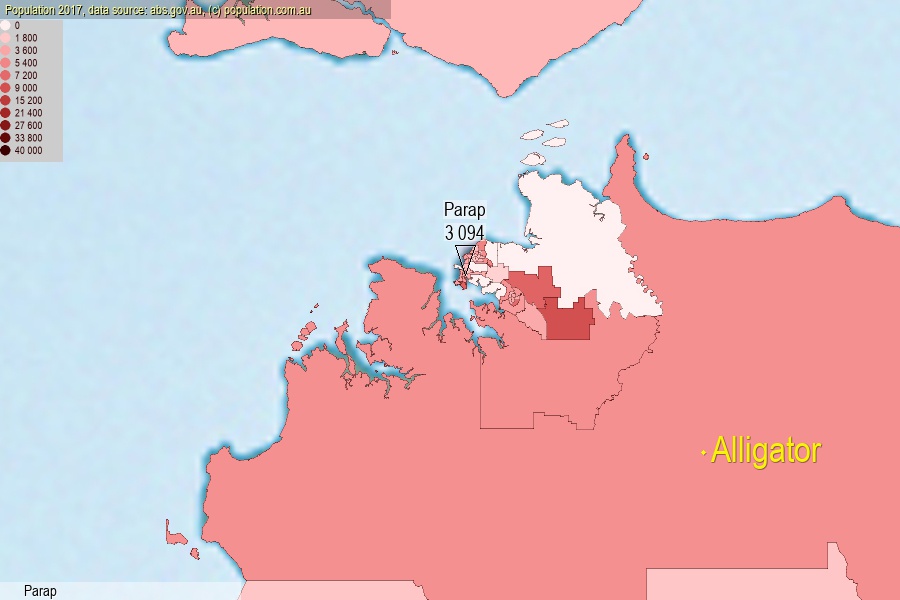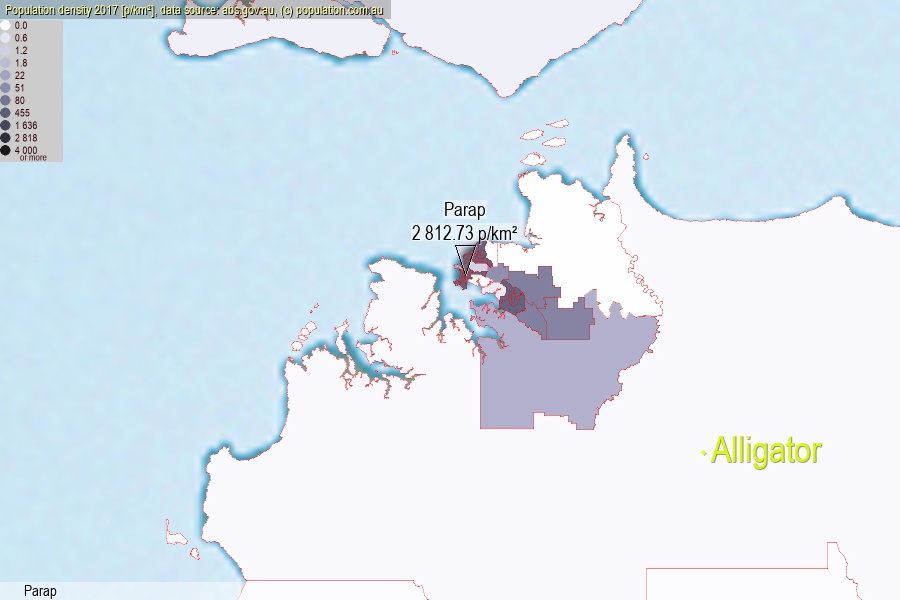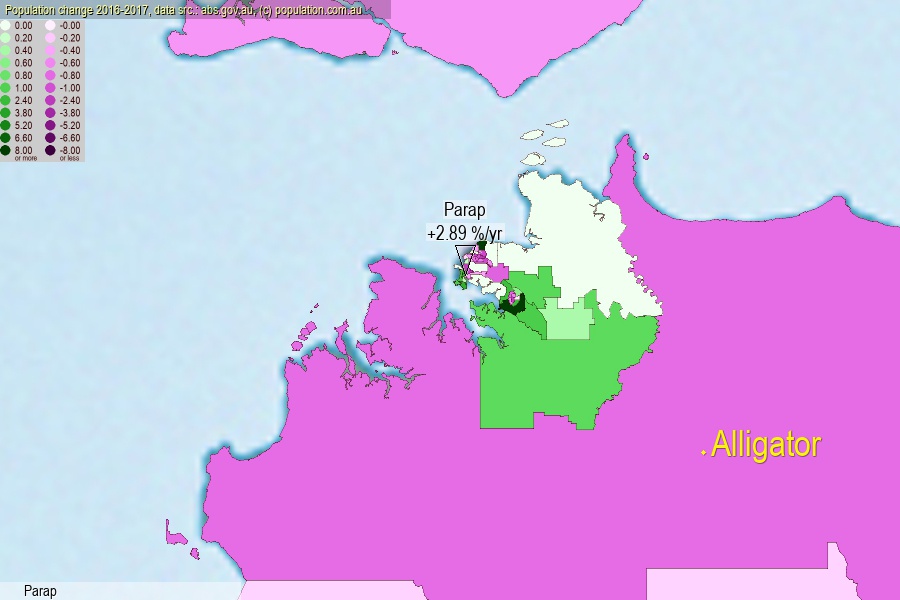 population.com.au
population.com.auLast official estimated population of Parap (as Statistical Area Level 2) was 3 094 people (on 2017-06-30)[2]. This was 0.01% of total Australian population and 1.254% of NT population. Area of Parap is 1.10 km², in this year population density was 2 812.73 p/km² . If population growth rate would be same as in period 2016-2017 (+2.89%/yr), Parap population in 2025 would be 3 887. [0]



Click to enlarge. Parap is located in the center of the images.
Population [people], population density [p./km²] and population change [%/year] [2]
View borders » (new window) [4]
[1991-1992] +0.37 %/Yr.
[1992-1993] +1.29 %/Yr.
[1993-1994] +0.85 %/Yr.
[1994-1995] +1.81 %/Yr.
[1995-1996] +1.66 %/Yr.
[1996-1997] +0.17 %/Yr.
[1997-1998] +0.64 %/Yr.
[1998-1999] +0.81 %/Yr.
[1999-2000] +0.57 %/Yr.
[2000-2001] +0.11 %/Yr.
[2001-2002] +2.33 %/Yr.
[2002-2003] +1.94 %/Yr.
[2003-2004] +2.34 %/Yr.
[2004-2005] +2.66 %/Yr.
[2005-2006] +0.67 %/Yr.
[2006-2007] +1.55 %/Yr.
[2007-2008] +1.73 %/Yr.
[2008-2009] +1.70 %/Yr.
[2009-2010] +2.55 %/Yr.
[2010-2011] +2.25 %/Yr.
[2011-2012] +7.67 %/Yr.
[2012-2013] +8.38 %/Yr.
[2013-2014] +5.97 %/Yr.
[2014-2015] +7.56 %/Yr.
[2015-2016] +5.73 %/Yr.
[2016-2017] +2.89 %/Yr.
[0] Calculated with linear interpolation from officially estimated population
[1] Read more about SA2 and Australian Statistical Geography Standard (ASGS) on abs.gov.au
[2] Population data from Australian Bureau of Statistics (Population and density: 2017; change: 2016-2017)
[3] Digital Boundaries: Australian Statistical Geography Standard (ASGS) 2016.
[4] Border coordinates are simplifyed using Ramer-Douglas-Peucker algorithm.